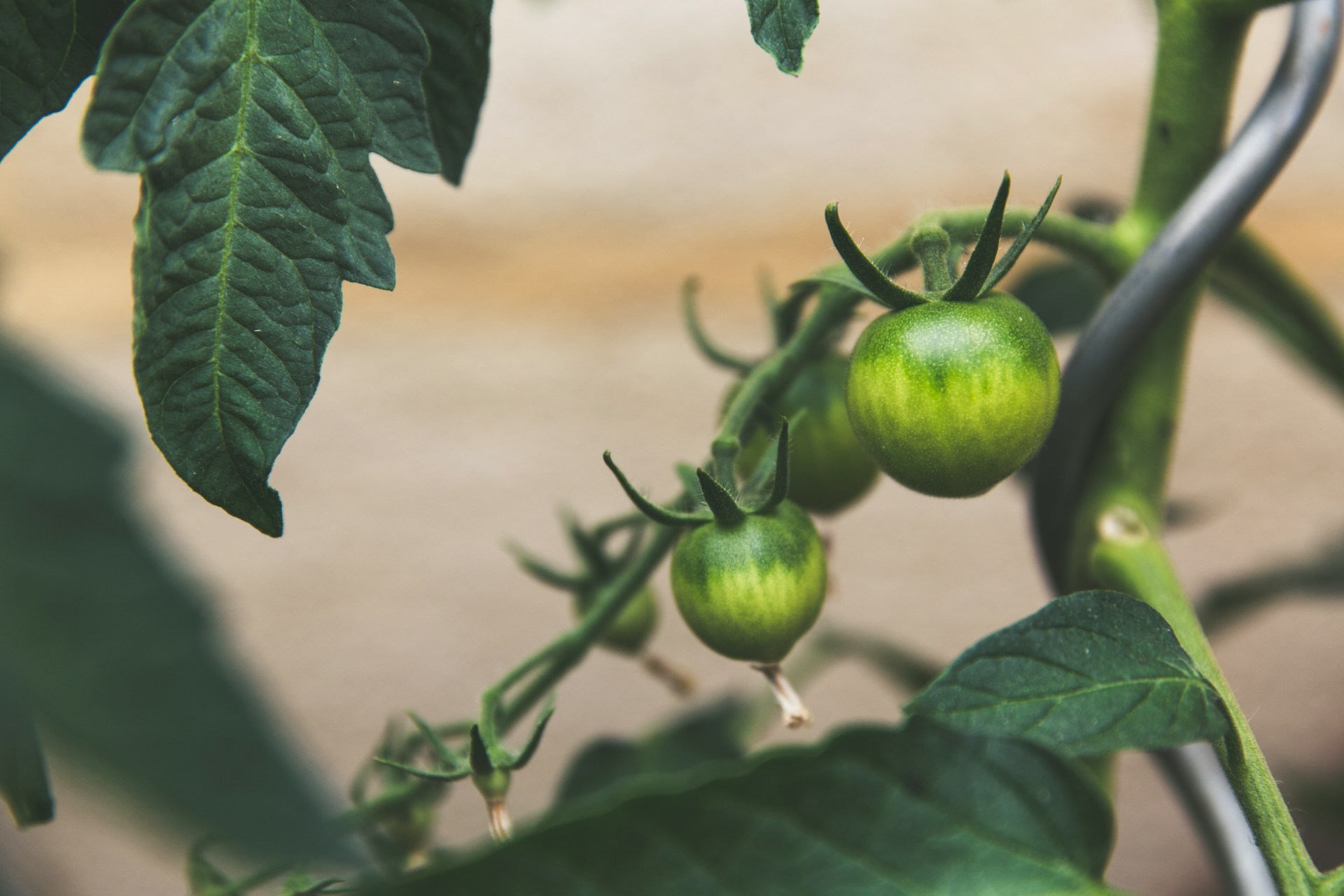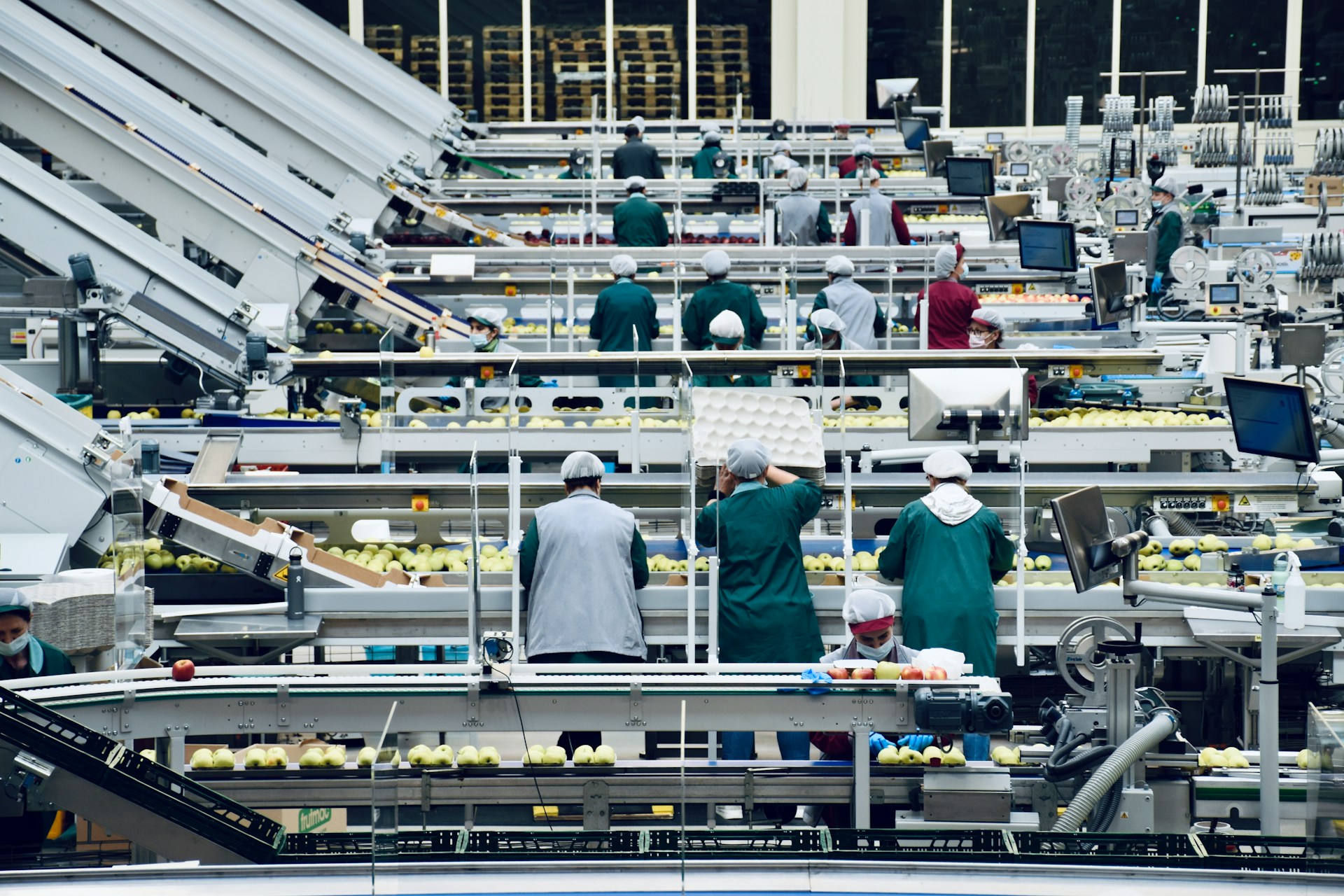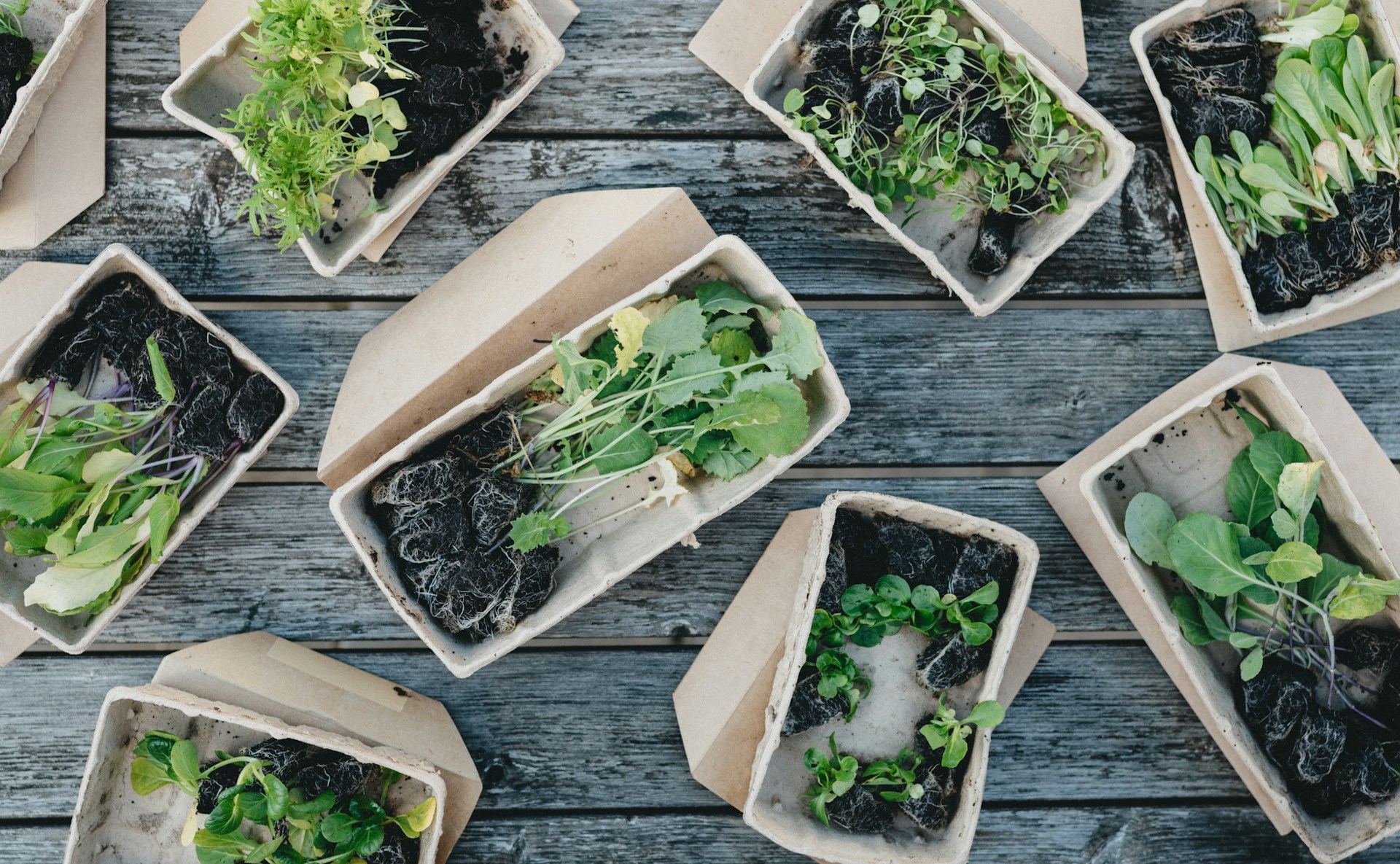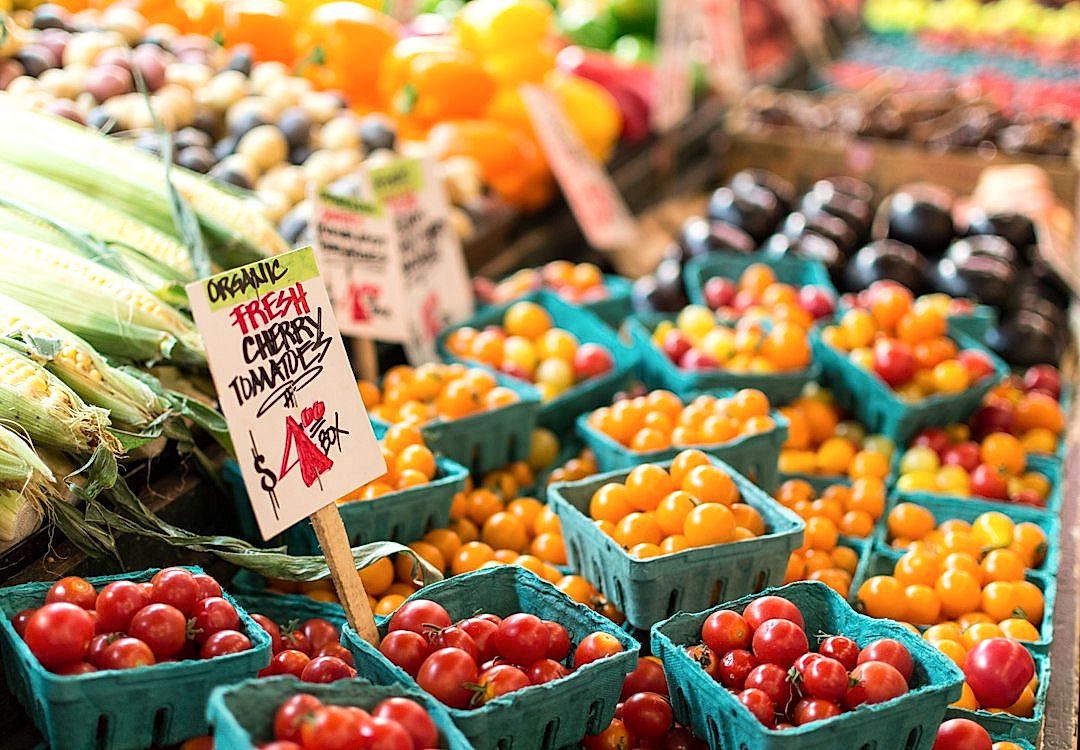The global community faces a pressing need for more sustainable practices in every industry, including the vital sector of produce packaging.
Current methods often generate significant waste, contributing to environmental degradation.
However, dynamic new strategies are emerging to address this issue head-on.
These ground-breaking solutions aim to reduce waste, promote recyclability, and optimize resource use.
This article seeks to delve into these innovative strategies in depth.
By understanding these new methodologies, we can better comprehend the future trajectory of sustainable produce packaging.
Revolutionary Approaches To Produce Packing Sustainability
1. Implement biodegradable materials for packaging
The environmental implications of conventional, non-degradable packaging materials have become a growing concern, driving a surge in demand for biodegradable alternatives.
Biodegradable materials are substances that can be broken down by natural organisms and processes within a reasonably short timeframe.
The significance of utilizing these as packaging materials lies in alleviating the accumulation of non-degradable waste.
Non-degradable materials, specifically petroleum-based plastics, contribute significantly to global pollution, particularly in our oceans.
Biodegradable packaging offers an opportunity to mitigate this harm, returning to the environment in a benign or even beneficial form when discarded.
There are many forms of biodegradable materials that could serve as effective packaging.
They may include plant-based plastics, such as polylactic acid (PLA), derived from crops like corn and sugarcane.
Other biodegradable materials for potential use in packaging include starch-based bioplastics, mushroom-based materials, and chitosan, developed from shellfish waste.
Each of these materials, once discarded, can be naturally and harmlessly broken down by microorganisms in the environment.
However, it’s crucial to understand that implementing biodegradable materials for packaging is not a straightforward replacement operation for conventional materials.
Biodegradable materials can require different handling, storage, and processing methods for manufacturing.
Moreover, ensuring that products packaged with biodegradable material are handled and discarded correctly at the end of their lifecycle may require changes to waste management systems and consumer education.
Furthermore, the sourcing and production of biodegradable materials may also have environmental implications to be considered.
For instance, the cultivation of corn for PLA may contribute to deforestation and requires significant water and energy inputs.
Nonetheless, when managed responsibly with these considerations in mind, the implementation of biodegradable materials in packaging can serve as a significant step towards packaging sustainability.
2. Adopt reusable container initiatives
When delving into the realm of sustainability in product packaging, one element that consistently surfaces is the implementation of reusable container initiatives.
These initiatives aim to reduce waste by using materials that can withstand multiple usage cycles, instead of being discarded after a single use.
Not only does this approach present an opportunity to lower the production of wasteful packaging, it also provides an economic benefit to manufacturers through savings in material costs.
This innovative concept has the potential to rewrite the rules of product packaging, turning waste and disposal concerns into opportunities for re-use and sustainability.
However, this is not simply about reusing containers; it also requires a shift in attitude about how we view and handle packaging.
Companies need to communicate the value of reusing containers to their customers, and invest in education and awareness campaigns that can bring about this behavioral change.
Companies can also offer incentives such as discounts to customers who return their packaging for reuse, introducing a ‘return and refill’ system that not only ensures the packaging is reused, but also encourages repeat business.
Additionally, creating strong partnerships with other businesses or organizations can lead to a wider adoption of reusable containers.
For instance, collaborations with local recycling centers can help manage the return and sanitization process of containers, making the recycling program more efficient and sustainable.
Besides, integrating this approach into the core business strategy can present a unique selling proposition, thereby boosting a company’s image as an environmentally friendly brand.
Indeed, it’s important to understand that reusable packaging doesn’t necessarily mean lack of creativity or innovation.
It requires companies to rethink their approach to packaging, exploring innovative designs and materials that can be reused without compromising product safety or quality.
For instance, plant-based materials are growing increasingly popular as a sustainable alternative to traditional plastic, not only are they capable of being reused, they are also capable of being composted at the end of their life span.
In the end, the adoption of reusable container initiatives is about making a commitment to a sustainable future, one where companies recognize their responsibility to the environment and are willing to invest in practices that achieve this goal.
It’s an important step forward in preserving our environment for the generations to come as a part of the revolutionary approaches to product packaging sustainability.
3. Prioritize Minimalistic, Less-Waste Packaging Design
Among the newest trends evolving in the business world is the need for more sustainable practices, particularly when it comes to packaging.
Companies are increasingly recognizing the need to reduce their environmental footprint and are investing in ways to make their packaging more eco-friendly.
One of these practices is adopting a minimalistic, less-waste design for packaging.
It represents not only environmental consciousness but also a sense of innovation and cutting-edge design.
In this sense, packaging design becomes about more than just aesthetics—it becomes about sustainability and saving our planet.
Minimalistic packaging often means fewer materials used, thereby reducing the amount of waste produced.
This doesn’t just mean using less plastic; it can also mean small, yet significant changes like reducing the size of labels or reducing the amount of ink used in printing.
Minimalistic design, therefore, is about making the most of resources while ensuring that the main purpose of packaging – which is protection and preservation of the product – is still achieved.
Being eco-friendly means realizing and accepting the responsibility we have towards our planet and future generations.
By prioritizing sustainable and minimalistic designs in packaging, we are not only meeting our corporate social responsibility objectives but also endearing ourselves to consumers who are becoming increasingly conscious about the environmental impact of their purchasing choices.
Furthermore, minimalistic packaging design also has a practical and economic advantage.
It can reduce manufacturing costs and materials and even the fuel used in transportation due to reduced weight.
With the right approach, a shift to minimalistic, less-waste packaging could even lead to better profit margins for businesses while making a significant difference to the environment.
Embracing a minimalistic packaging design is, therefore, a step in the right direction towards a more sustainable future for all.
The journey towards sustainable packaging is indeed a vast one, but every step taken towards reduction, re-use, and recyclability of packaging is a step towards sustainability.
Therefore, prioritizing minimalistic, less-waste packaging design is one of the most revolutionary approaches to sustainable packaging.
4. Invest in Plant-Based Plastic Alternatives
The growing concern over plastic pollution and its harmful effects on the environment have led to the development of plant-based plastic alternatives.
These innovative material solutions not only aim to reduce the dependence on non-renewable fossil fuel-based plastics, but also aim to alleviate the overall environmental footprint of packaging.
One of the critical features of plant-based plastics is their ability to biodegrade, unlike traditional petroleum-based plastics which persist in the environment for hundreds of years.
Plant-based plastics offer a practical and sustainable solution, enabling industries to continue producing without inflicting environmental harm.
As a company committed to sustainability, one revolutionary approach to achieve this would be to invest in the research and development of these plant-based plastic alternatives.
While the upfront cost might appear substantial, the long-term benefits both environmentally and economically are significant.
Adopting plant-based alternatives can lead to new business opportunities and financial savings in the long run, due to the reduction of waste disposal costs and potential regulatory fines.
Furthermore, investment in plant-based plastics could lead to a positive impact on brand image, as consumers are becoming increasingly environmentally conscious and favoring brands that demonstrate a clear commitment to sustainability.
The global market for bio-degradable plastics is expected to grow exponentially in the coming years, which presents a great opportunity for businesses to ride on this wave of eco-consciousness and be a part of the change.
However, it is important to note that while plant-based plastics present a promising solution, they are not without their own set of challenges.
The production process can sometimes lead to increased greenhouse gas emissions and require large amounts of water, highlighting the need for continued research and development in this field.
Amidst these challenges, companies must be diligent in their pursuit of sustainable packaging materials and ensure that the overall environmental impact of new materials is indeed less than that of traditional plastics.
By investing in plant-based plastic alternatives, companies can indeed make a significant positive impact on the world’s plastic pollution crisis while aligning their practices with global sustainability goals.
In making this strategic shift, companies can lead the way in revolutionizing the packaging industry.
5. Integrate Circular Economy Principles in Production
The inclusion of circular economy principles in production is pivotal in the revolutionary approach to attain packing sustainability.
With an increasing global focus on sustainability and waste reduction, industries are adopting the concept of the circular economy to transform their production processes.
The circular economy categories production as a continuous positive development cycle that preserves and enhances natural capital, optimises resource yields, and minimizes system risks.
Integrating circular economy principles into production typically entails interruptions of linear ‘take-make-dispose’ industrial processes, replacing them with renewable, reusable and restorative cycles.
This kind of economy is restorative and regenerative by design, aiming to maintain products, components, and materials at their highest utility and value at all times.
The circular economy model distances itself from the traditional linear economy in terms of energy and resources, focusing instead on the cycle of share, lease, reuse, repair, refurbish and recycle, in an (almost) closed loop.
By integrating circular economy principles in production, businesses can rejuvenate products that would otherwise have been wasted, thereby contributing to sustainability.
This innovative approach is transformative in that it challenges the status quo by redesigniving products and their packaging to be used over and over again.
Moreover, this synergy can unleash numerous economic opportunities that are not possible within the traditional linear model of production.
For instance, businesses that have successfully incorporated these principles in their production processes have seen a significant reduction in packaging waste, and some have even reported considerable savings in operational expenses.
In addition, with a circular model, businesses have the opportunity to innovate and diversify their supply chains, reducing their dependency on raw materials and lowering their carbon footprint.
There’s also growing evidence to show that businesses adopting circular economy practices achieve greater competitiveness, while also improving customer loyalty and employee engagement.
Furthermore, integrating these principles can help businesses to align with international sustainability standards and potentially gain access to new markets.
Conclusively, integrating circular economy principles is a win-win scenario for businesses, benefiting not just the environment but also the economy and society at large.
Therefore, it is vital for production units to understand that the transition to a circular economy demands revolutionary thinking, innovative business models, and most importantly a commitment to change at all levels of the organization.
The Bottom Line
Implementing environmentally friendly packaging solutions is not only a necessary step towards preserving our world for future generations, but also an effective strategy for companies aiming to enhance their public perception and customer loyalty.
Making use of biodegradable components in packaging, embracing initiatives supporting the use of reusable containers, and preferring minimalistic, less-waste designs should be company priorities.
Investment in research and the development of plant-based plastic alternatives also shows great promise as a measure to reduce environmental impact.
By incorporating circular economy principles in production processes, businesses can further contribute to sustainable development, establishing themselves as progressive and responsible corporations.
This would place them at the forefront of a market increasingly guided by environmentally-aware consumers, who use their buying power to influence and reward corporate environmental responsibility.




